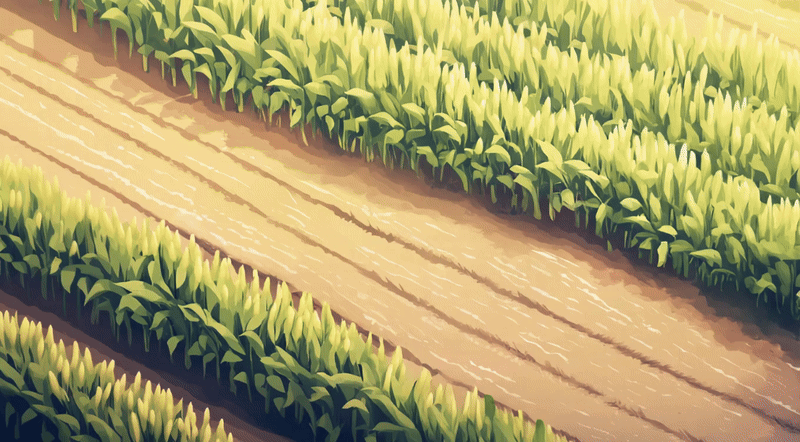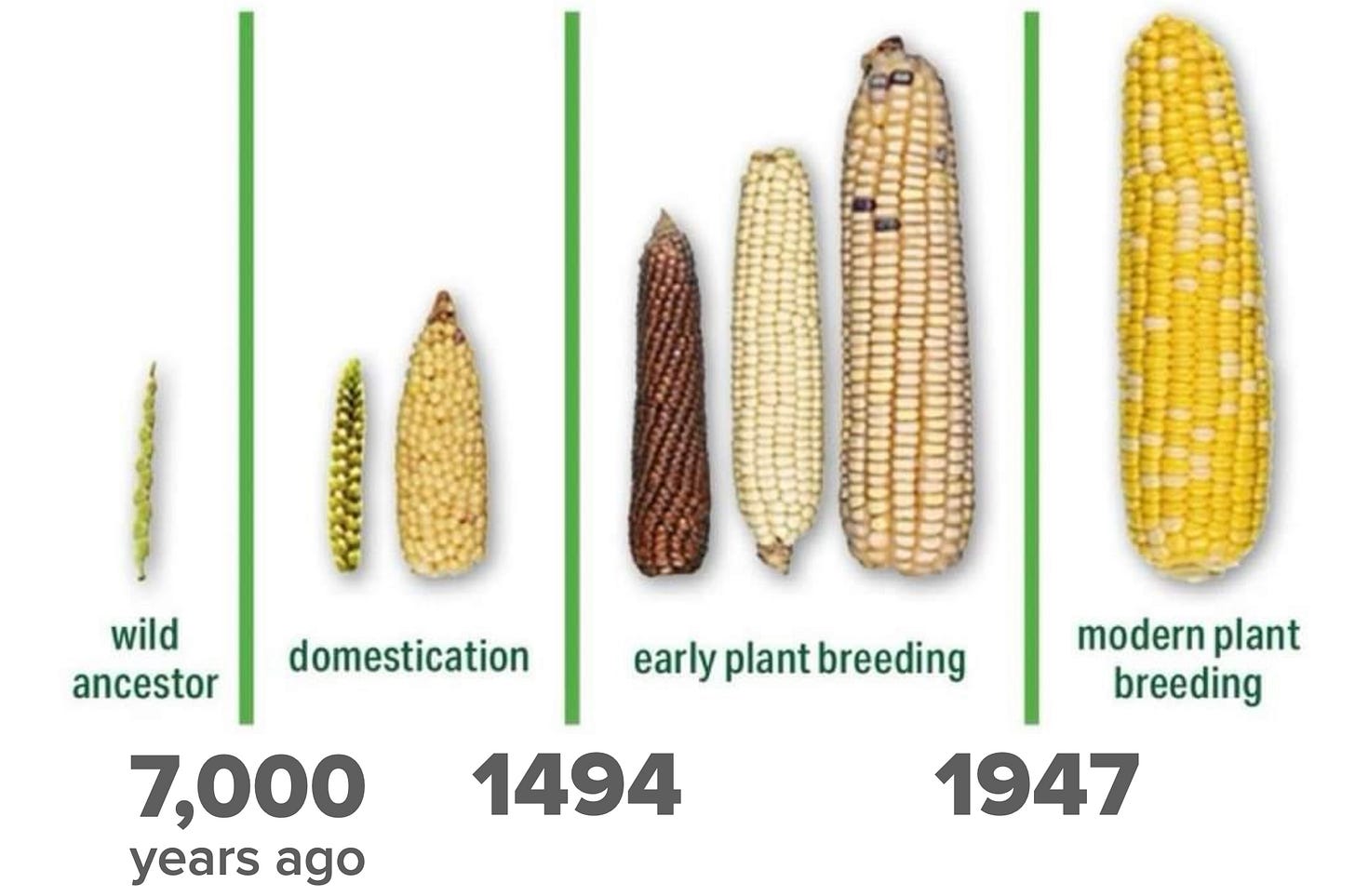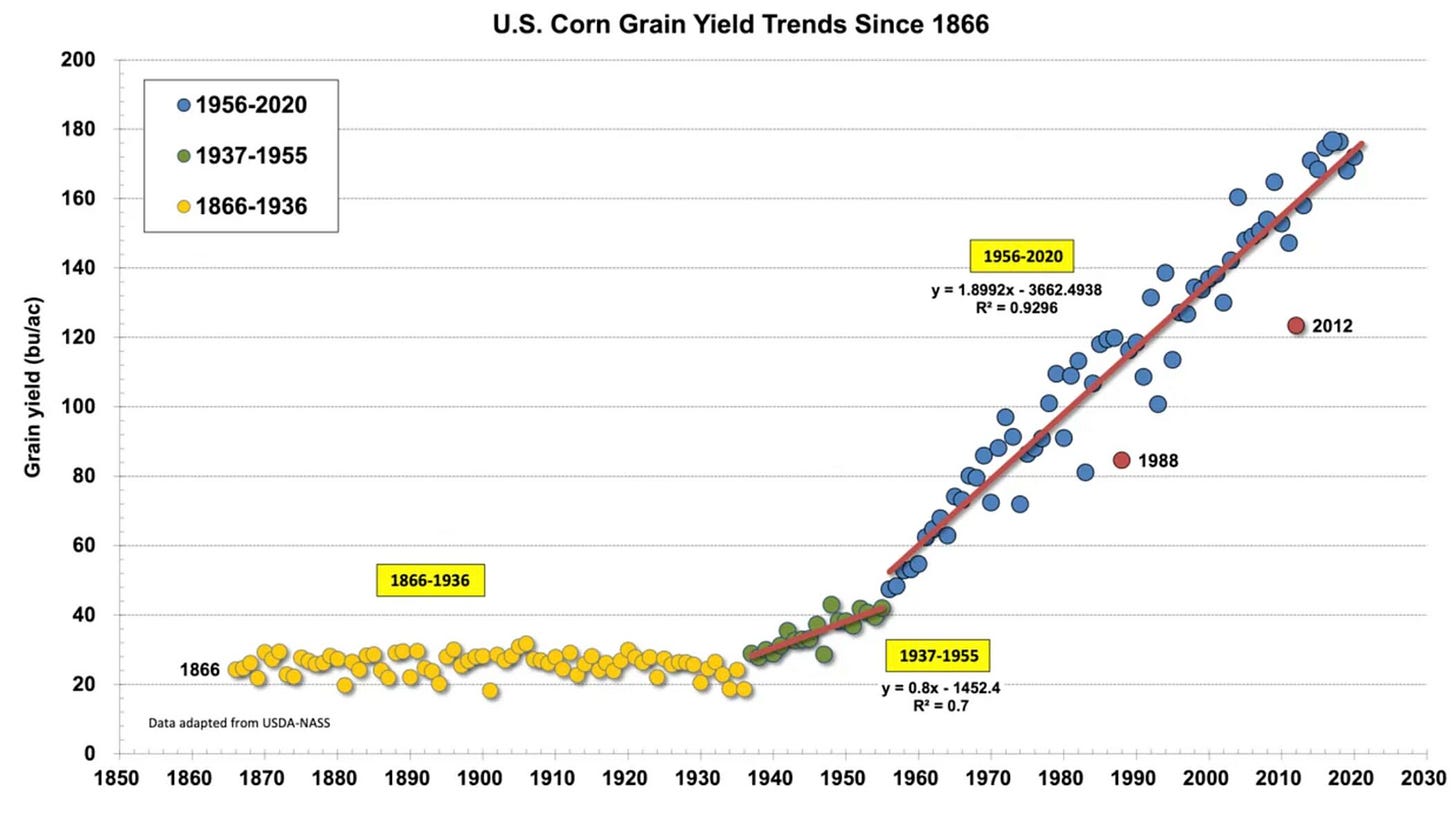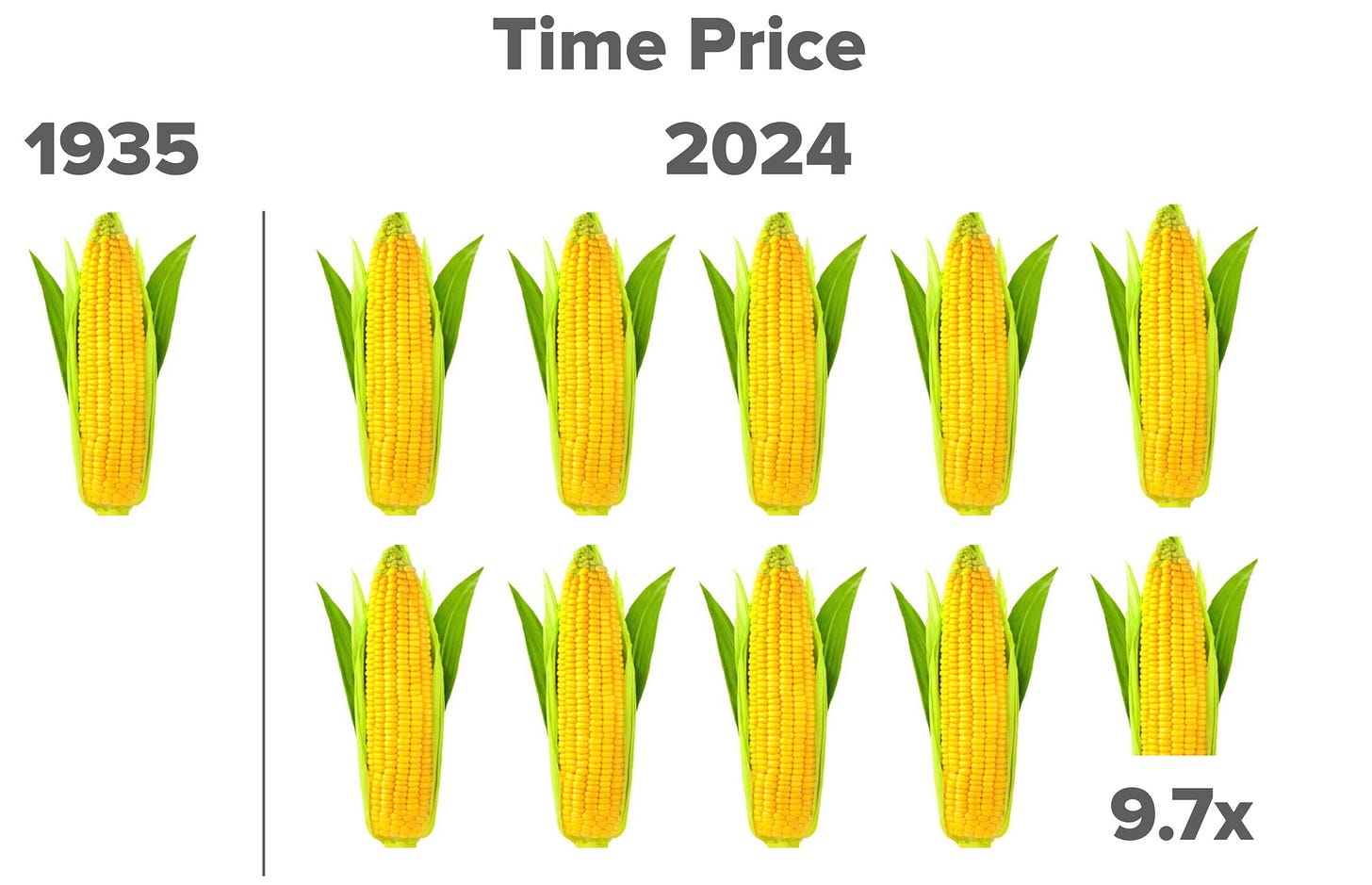Cornpreneurs Save Us From Davos Elites
US corn yields are increasing 3.56 times faster than the population.
Corn has a rich history stretching back thousands of years to Mesoamerica, where it was domesticated from a wild grass called teosinte. Indigenous peoples in the Americas developed corn through selective breeding, making it a cornerstone of their diets, cultures, and civilizations. After Christopher Columbus introduced corn to Europe in 1493, it spread rapidly across the globe, becoming a dietary staple and key ingredient in countless cuisines.
Today, corn is the most widely produced grain in the world, with global production exceeding 1.2 billion metric tons. The United States leads the world in corn production, consumption, and exports—accounting for 31 percent of global output with 377.63 million metric tons, according to the USDA.
Over 95 percent of animal feed for US livestock—such as cattle, hogs, and poultry—comes from corn, which makes up roughly 40 percent of all corn used domestically. Despite this abundance, the Davos crowd would have us believe that our survival hinges on swapping steaks and burgers for worms and insects. Under the banner of “sustainability,” they propose shuttering our Texas Roadhouses, Dickey’s Barbecue Pits, and Chick-fil-As to make way for bug burgers. But are we really running out of beef, chicken, and pork?
Hardly. Corn is a foundational feed for producing those delicious meats. In the 1930s, US corn yields averaged 26 bushels per acre. Today, that number is 179.3 bushels per acre—with top-performing farms reaching an astonishing 624 bushels. That’s a 589.6 percent increase in yield over 88 years. One acre today produces as much corn as nearly 6.89 acres did in 1936, freeing up 5.89 acres for other uses—from conservation to recreation. Yields continue to rise at about 1.75 bushels per year, doubling every 31.6 years thanks to a 2.21 percent annual growth rate.
Meanwhile, the US population grew 165.6 percent between 1936 and 2024—from 128 million to 340 million. Yet every one percent increase in population has corresponded with a 3.56 percent increase in corn abundance. If each American consumed one bushel of corn in 1936, it would’ve required 4.9 million acres of land to grow the crop. Today, even with 212 million more people, it only takes about 1.9 million acres. We’ve reduced land needs by 61 percent. We’re growing smarter much faster than we’re growing people.
Corn was selling for around 68 cents a bushel in the 1930s. US unskilled workers were earning around 28 cents an hour. That would put the time price at 2.42 hours. The USDA currently estimates the season-average corn price at $4.20 per bushel for the 2025-2026 crop year. Unskilled workers are earning $17.17 an hour putting the time price at 0.24 hours or around 15 minutes. The time price has fallen from 145 minutes to 15 minutes, or almost 90 percent. For the time it took an unskilled worker to earn the money to buy one bushel of corn in 1930, they get 9.7 bushels today.
MIT’s Andrew McAfee highlighted this trend in More from Less, predicting continued innovation in agriculture. He’s even backing his confidence with a $100,000 bet: that by 2029, the US will produce more crops than in 2019 while using less land, fertilizer, and irrigation. If you think he’s wrong—and believe the World Economic Forum’s bug-eating future is inevitable—there’s your chance at easy money.
So yes, you could try a worm with your next meal—but there’s no reason to think we’re running out of corn or the land to raise your next steak, wing, or chop.






Great post Gale, thank you for sharing. And thanks to the "cornpreneurs"—from researcher to farmers—who keep pushing crop yield forward! If progress will continue, it will be because of them, certainly not because of top-down mandates from Davos.
Your article connects with other misguided agricultural policies and with the looming threat of unelected managerial elites insulated from criticism. I wrote about it here https://mokagio.substack.com/p/bug-burgers-and-broken-feedback-loops (it's all before the paywall). Would love to hear your thoughts.
Dave B......."the vast monoculture created by so much of one type of corn."
YOU ARE POSSIBLY CONFUSED WITH BANANAS : "all commercially grown bananas in Australia are infertile. Specifically, the Cavendish banana, which makes up a large majority of the banana crop, is sterile and cannot produce seeds. This means they are propagated through cloning, using methods like suckers and tissue culture. " " Genetic Vulnerability:........The fact that Cavendish bananas are sterile clones makes them highly vulnerable to diseases, as they are genetically identical and lack the diversity to resist new threats. "
...............Even so , there are about 1,000 others that CAN BE MADE AVAILABLE !!!
" Not all corn is the same: We typically speak about corn in general terms as if it were just one crop. However, there are many types of corn, grown for different uses and featuring different colors.
There are six major types of corn: dent (most field corn grown in the United States today), flint (the colorful varieties also known as Indian corn), pod (a wild type from which corn as we know it today originated), sweet (the type eaten on the cob), flour (composed largely of soft starch and easy to grind) and popcorn (which has a hard moisture-sealed hull and a dense starchy interior that puffs when heated)."
https://cfaes.osu.edu/news/articles/%E2%80%98all-corn-is-the-same%E2%80%99-and-other-foolishness-about-america%E2%80%99s-king-crops#:~:text=There%20are%20six%20major%20types,easy%20to%20grind)%20and%20popcorn
.
INCIDENTALLY , WHAT EXACTLY ARE "THE DETRIMENTAL EFFECTS OF THE VAST MONOCULTURE
OF CORN" PLEASE ? [ apart from boredom ! ]